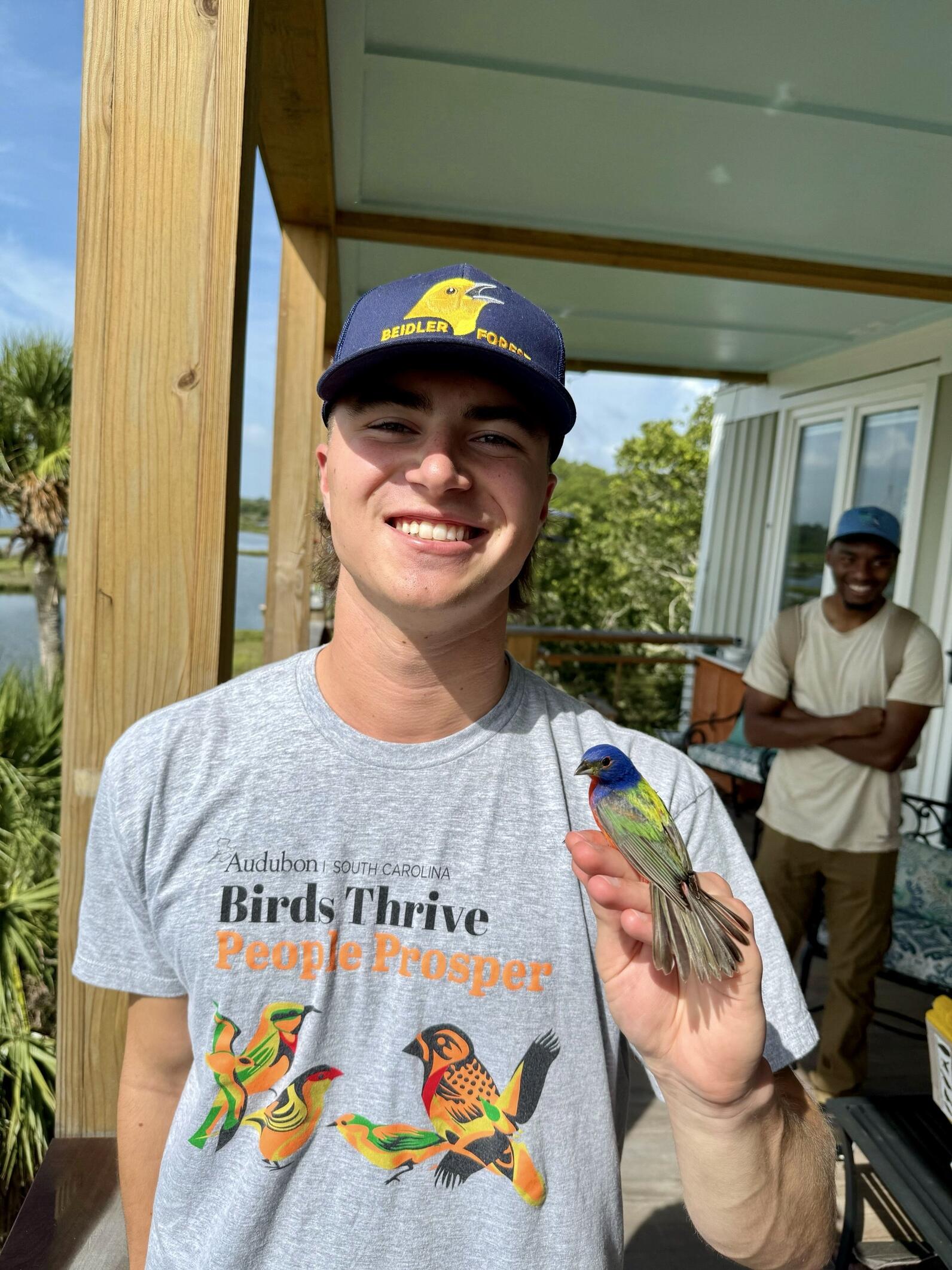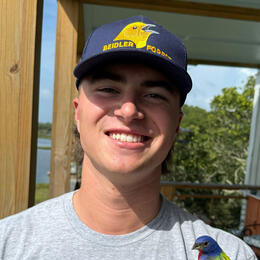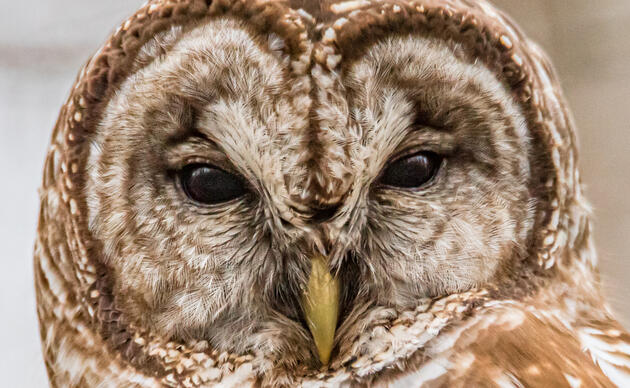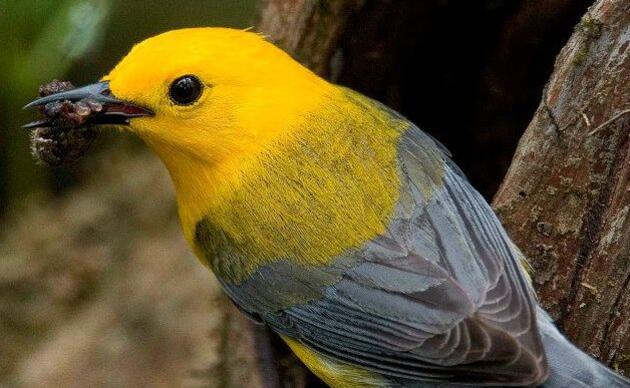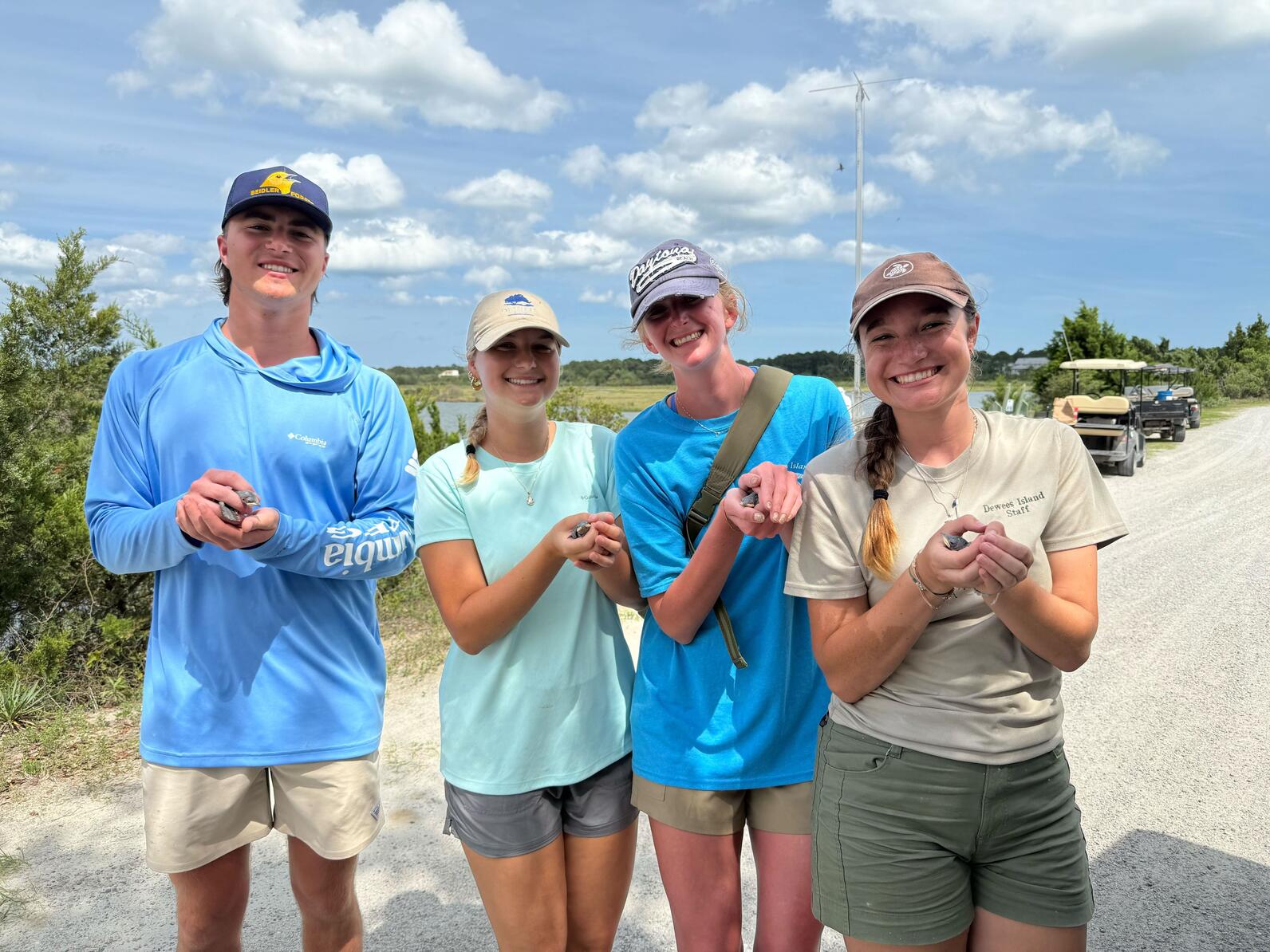
Jacob Gianopulos is Audubon South Carolina's bird research intern this summer. You can learn more about Jacob here, or read below to see what he's been up to this summer.
For the past two months, I have had the privilege of working as an intern for the Audubon Center and Sanctuary here at Beidler Forest. Growing up in the Piedmont region of North Carolina and attending school in the mountains at Appalachian State, spending a summer in the swamp has been an experience like no other. Saying that I have loved my time here would be an understatement, as it has already given me experiences, lessons, and memories I wouldn’t have found anywhere else. With about a month left here in the Lowcountry, I’m looking forward to learning new skills and building on everything I’ve learned so far.
A big part of my work at Beidler has involved participating in several bird banding projects, including MAPS, Project PROTHO, and Project MartinWatch. Each of these has its own mission, but the work on our end is pretty similar for all three.
MAPS (Monitoring Avian Productivity and Survivorship) is the most general of the three and involves setting up ten mist nets around the Beidler campus to capture and band any birds that fly into them. We conduct ten MAPS sessions each season, spaced about ten days apart, and we’ve already caught and recorded data on dozens of birds for the project.
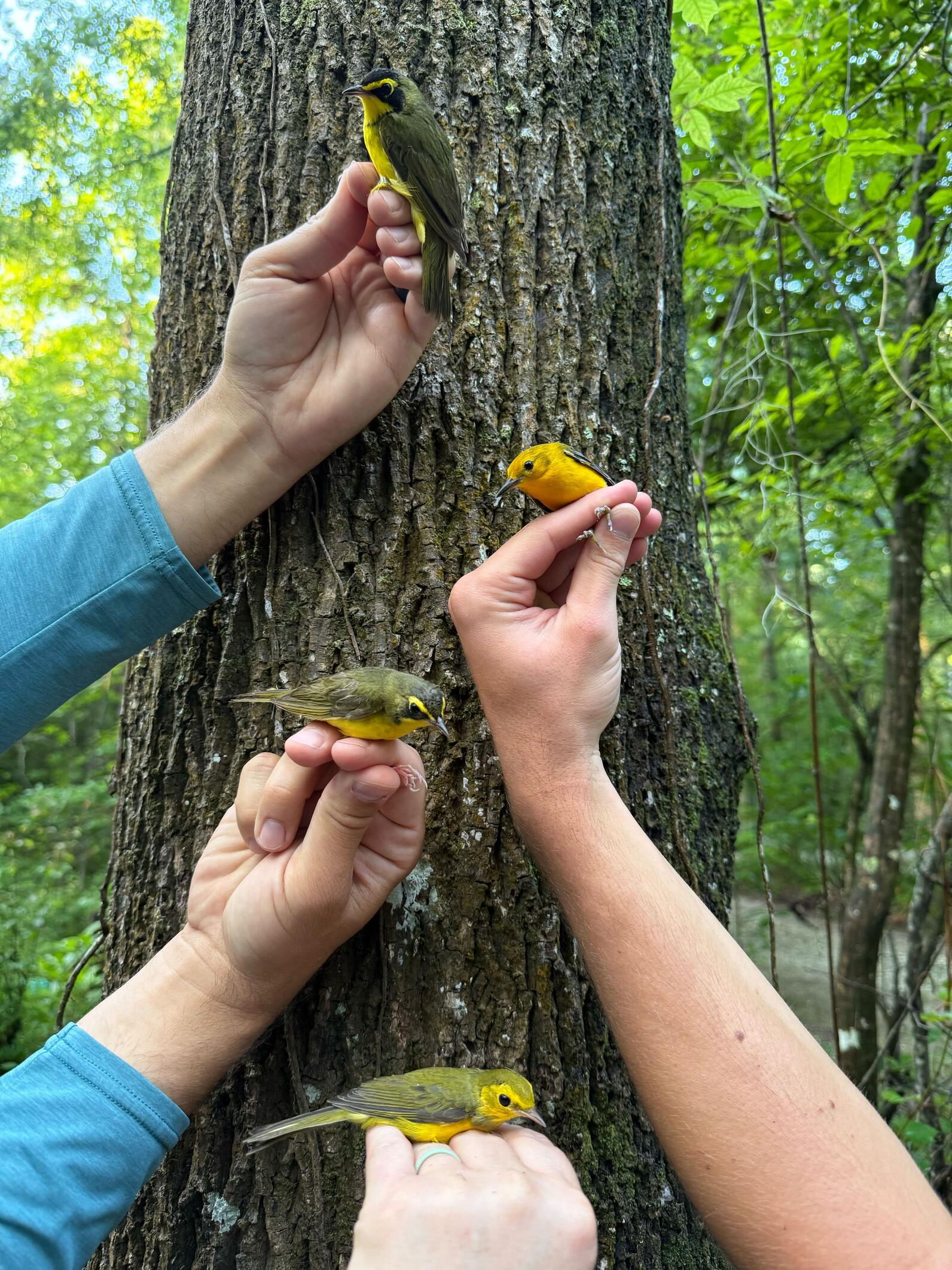
A lot of the banding work can be tiring, but it is always rewarding in the end. Most MAPS mornings start with a 4:30 AM alarm, which gives me just enough time to get ready and be at the gate before sunrise. While that’s much earlier than anything I’ve been used to, it all becomes worth it when we catch that first bird. After each capture, we apply a band and log key information like age, size, feather condition, and more. All of this data is submitted to a national database to help track bird survivorship and movement. While we’re just one small piece of a much larger puzzle, it’s rewarding to know that our work contributes to broader knowledge about habitat conservation and bird populations as a whole.
During my first banding session I did a lot of observing, but it didn’t take long for things to become hands-on. Jen Tyrrell and Matt Johnson have both been great teachers, and I’ve learned more about the banding process than I ever could have imagined. From setting up and taking down nets to extracting birds and applying bands, I feel like I’ve gained years of experience in just a couple of months.
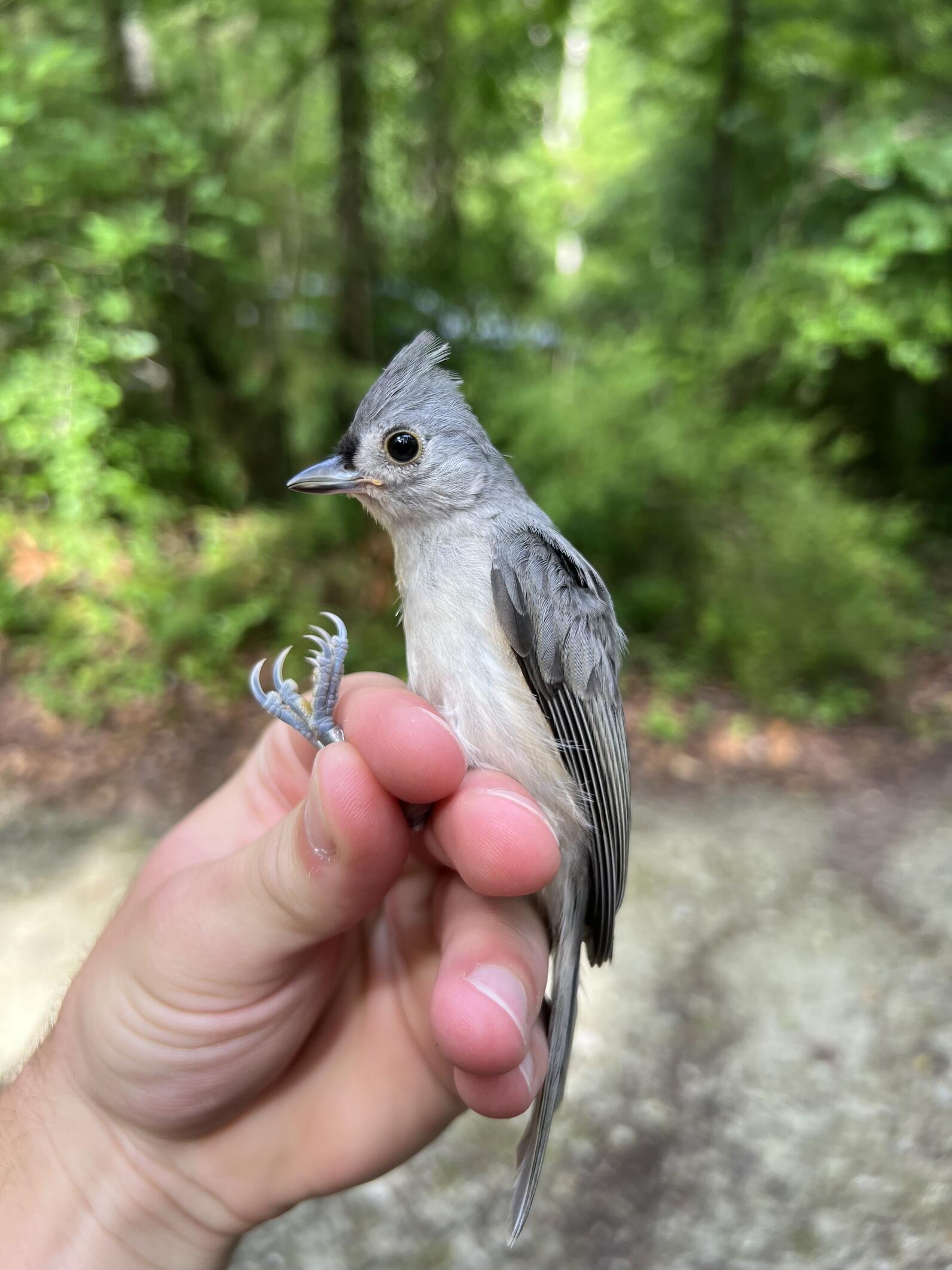
Another project I definitely have to highlight is our work with Prothonotary Warblers. Growing up in an area hours away from any sort of habitat like this, I had never seen one in person until I made it down to Beidler. Being the only cavity-nesting warbler in the Eastern United States, and living almost exclusively in bottomland hardwood forests, they are a unique species. Project PROTHO works to study and protect these birds, and their partnership has given us the chance to work closely with the individuals that live right here in the swamp. Catching Prothonotary Warblers is pretty different from MAPS banding, as it is a lot more targeted. A lot of time is spent scouting for unbanded birds along the boardwalk, then waiting patiently and trying to bait them into the net using a decoy and playback calls. I’ve been an avid fisherman for most of my life, so I like to think of this as “fishing for birds.” It definitely takes a lot of trial and error, but being able to catch the bird and contribute to the research makes it all worth it.
I’ve also spent some time with the Dewees Island Conservancy and ASC’s Coastal Team. This has ranged from shorebird stewardship training, Wilson’s Plover nest monitoring, and banding assignments involving Painted Buntings and Purple Martin chicks. Most of the stewardship side is education based, where we do our best to inform the public about how we can better coexist with the birds we share our beaches with.
The banding work is more hands-on, and getting to handle Purple Martin chicks was a surreal experience. I’ve seen Purple Martin gourds in the countryside growing up, but this was the first time I’d ever gotten to work with the birds themselves. The process is like an assembly line; we lower the gourds, remove and band the chicks while the nests are being cleaned, and then raise everything back up when we’re done. It’s been really awesome to see how the team at Dewees has helped support a healthy, growing population of Purple Martins, and I’m just happy to have been a small part of that effort.
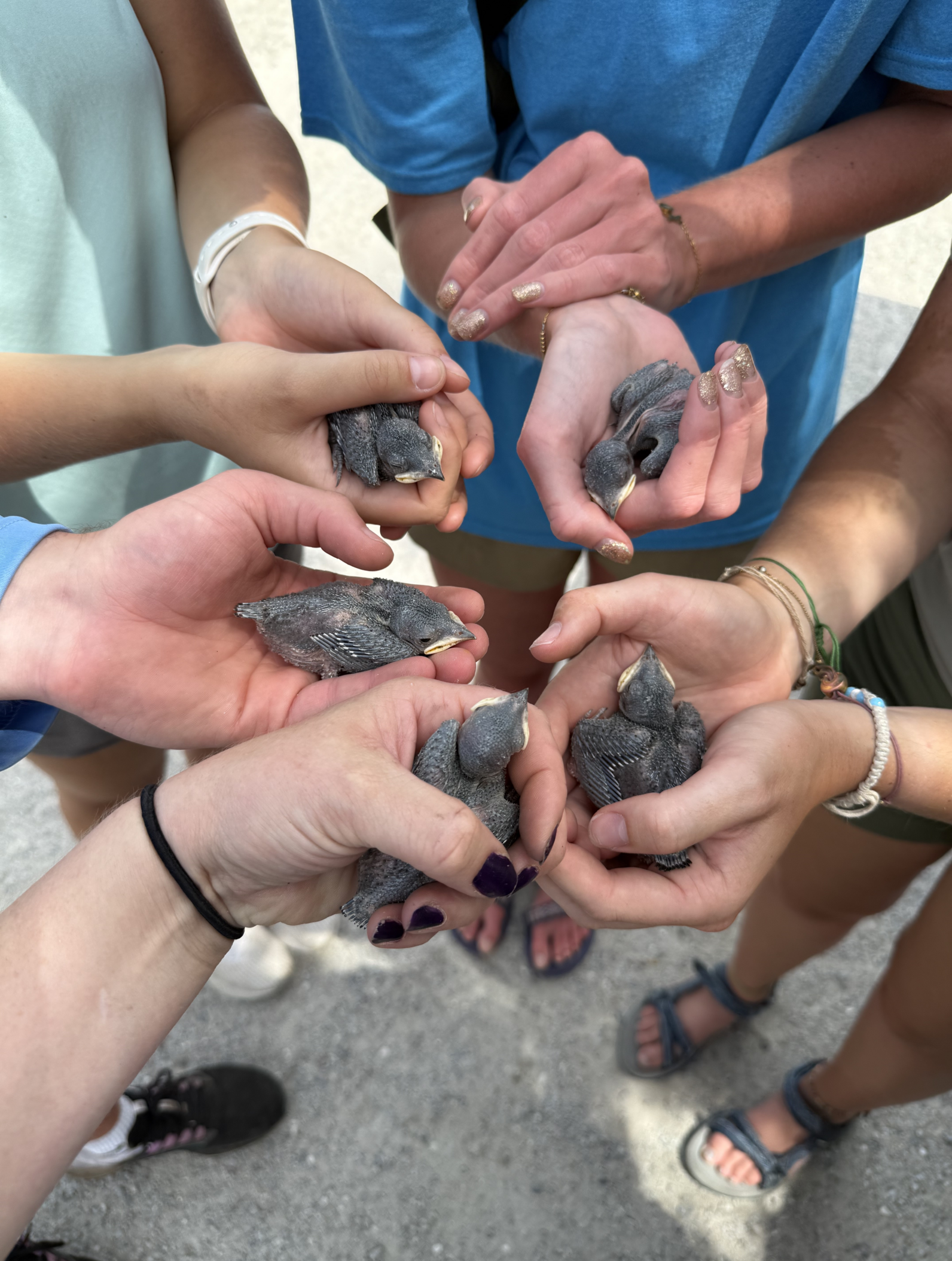
The shorebird nest monitoring has been a really eye-opening experience for me, as it has made me realize how close humans often are to shorebird nests, and how much of an impact we can have on their survival. We’ve monitored several Wilson’s Plover nests, and I’ve been able to observe everything from eggs and chicks to adults. I’ve assisted in keeping notes on nest conditions, parent behavior, and chick survival. While this work isn’t as hands-on as banding, it’s just as important for understanding how these species are doing in the wild.
I have nothing but great things to say about my time with Audubon South Carolina. I’ve met so many amazing people at both Beidler and on the coast, and I wouldn’t trade this experience for anything. I’ve had a passion for birds and the outdoors since I was a child, so it has been a blessing to spend the summer working a hands-on role with some of my biggest interests. I’ve loved everything about being here so far, and I’m excited to see what the rest of the season has in store.
All capturing, handling, and banding of birds is authorized through a federal permit issued by the United States Geological Survey's Bird Banding Lab.
